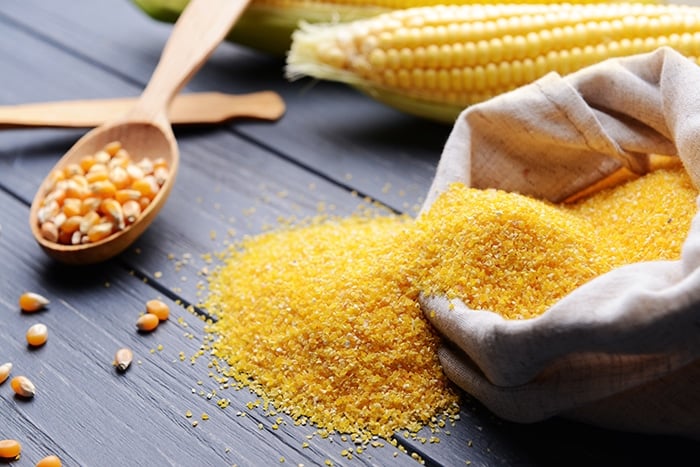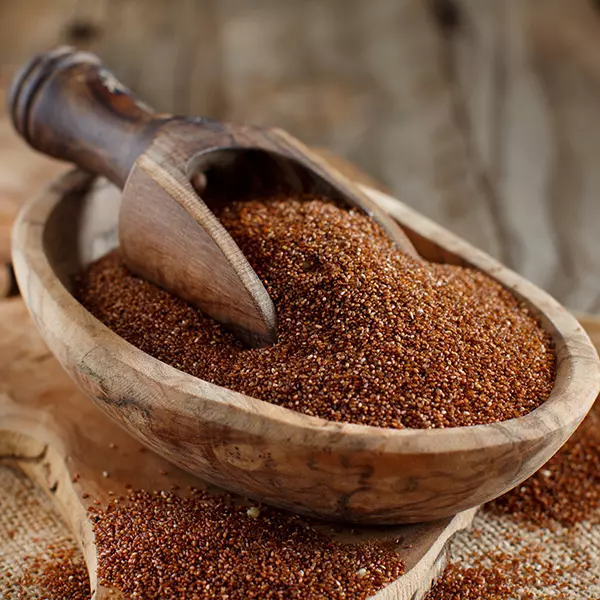For individuals who are delicate to gluten, have a gluten allergy, or have celiac illness, it is essential to seek out gluten free grains that may present the important vitamins present in complete grains.
Utilizing grain free recipes is nice, moderately, however I consider that the addition of complete grains right into a gluten free food plan is sweet for you. Let’s check out complete grains which might be gluten free and which of them to keep away from.

What’s a complete grain?
A complete grain is a cereal grain that contains all three important components of the kernel: the bran, the germ, and the endosperm. Every half contributes distinctive dietary advantages that make complete grains a vital element of a nutritious diet.
Bran: The bran is the outer layer of the kernel and has the entire grain’s fiber. The fiber content material within the bran helps wholesome digestion, aids in weight administration, and helps regulate blood sugar ranges.
Germ: The germ is the reproductive a part of the kernel, from which a brand new plant can develop. It incorporates important vitamins akin to B nutritional vitamins, vitamin E, and wholesome fat, all of which may also help defend towards numerous illnesses and assist total well-being, and assist in a sense of fullness and satisfaction from what we eat.
Endosperm: The endosperm is the starchy heart of the kernel, which gives vitality and sustenance for the rising plant. It incorporates principally carbohydrates and protein.
Complete grains are minimally processed, retaining all components of the grain, and subsequently its whole profile of vitamins and fiber. This units them other than refined grains, the place the bran and germ are eliminated, leaving solely the starchy endosperm. The refining course of strips away most of the vitamins and fiber, which makes refined grains faster to digest, and fewer wholesome than their refined counterparts.
Do all complete grains have gluten?
No, not all complete grains comprise gluten. Gluten is a protein present in particular grains, akin to wheat, barley, and rye. Many different complete grains are naturally gluten free, providing scrumptious and nutritious options for these with gluten sensitivities or celiac illness.

Which complete grains shouldn’t have gluten?
Naturally gluten free grains are much more frequent than you may suppose. It is simply that so usually, there is a threat of cross-contamination throughout harvesting or processing with different grains. However, in case you store licensed gluten free merchandise, you’ve got acquired loads of protected complete grain choices in your gluten free way of life. Let’s discover the entire grain decisions for individuals who cannot tolerate gluten.
Oats
Oats are a nutritious, gluten free complete grain with quite a few well being advantages. They’re wealthy in fiber, nutritional vitamins, minerals, and antioxidants. Oats assist coronary heart well being by reducing levels of cholesterol, assist regulate blood sugar, assist in weight administration, and promote wholesome digestion.
Whereas oats comprise a protein known as avenin, much like gluten, most people with celiac illness or gluten sensitivity can tolerate it. Nonetheless, cross-contamination with gluten-containing grains can happen throughout processing.
To attenuate threat, it is best to select labeled gluten free oats and monitor your physique’s response to avenin. When you’ve got celiac illness or gluten sensitivity and you might be additionally illiberal of or delicate to oats, do not eat them.
Brown rice
Brown rice is a flexible, gluten free complete grain full of nutritional vitamins, minerals, and fiber. Its dietary profile consists of important vitamins like B nutritional vitamins, magnesium, and folate. As a staple in quite a few cuisines, brown rice and its fiber content material helps wholesome digestion and weight administration by selling satiety.
For these following a gluten free food plan, brown rice can be used as a flour substitute. Brown rice flour, made by grinding complete brown rice, is a superb various to wheat flour in numerous recipes, together with baked items and thickening sauces.
Utilizing brown rice flour helps preserve the dietary advantages of complete grains in gluten free dishes. A stability of white rice flour and brown rice flour is normally wanted in a recipe to create gluten free baked items with the correct texture and mouth really feel.
Millet
Millet is a small, gluten free grain with a powerful dietary profile, significantly as a supply of magnesium. This historical grain can be an excellent dietary fiber supply, selling wholesome digestion, weight administration, and total well-being.
Millet’s delicate taste and fast cooking time make it a flexible addition to all kinds of meals. It may generally be used as an alternative choice to rice or quinoa in dishes like pilafs, salads, and porridges.
Moreover, millet will be floor into flour and utilized in gluten free baking recipes, together with bread, pancakes, and muffins.
Amaranth
Amaranth, an historical gluten free pseudo-grain because it’s truly a seed however resembles and acts like a grain, is understood for its excessive protein and fiber content material and low carbohydrate content material. This nutrient-dense grain additionally incorporates a spread of antioxidants and important amino acids, contributing to total well being and well-being.
The distinct nutty taste of amaranth makes it a flexible ingredient, appropriate for a wide range of dishes, from salads to porridge. It may be cooked and served as a facet dish, blended into stews and soups, and even popped like popcorn for a healthful snack.
Moreover, amaranth flour can be utilized in gluten free baking recipes, offering a nutritious various to conventional wheat flour. It absorbs numerous liquid, like many complete grain flours in baking, so recipes you utilize needs to be developed particularly for utilizing this distinctive complete grain.
Buckwheat
Buckwheat, additionally a gluten free pseudo-grain, is wealthy in fiber, protein, and important minerals. Buckwheat flour is a well-liked selection for making conventional soba noodles in Japanese delicacies, and it is a frequent ingredient in some gluten free pancake recipes.
Teff
Teff, a tiny gluten free pseudo-grain that we use as a complete grain, originates from Ethiopia, is a dietary powerhouse, boasting excessive ranges of protein, fiber, and minerals like calcium, iron, and magnesium. Moreover, teff incorporates important amino acids and numerous nutritional vitamins, including to its standing as a health-promoting ingredient.
Historically, teff is used to make injera, a sourdough flatbread that may be a staple in Ethiopian and Eritrean cuisines. Its distinctive, barely nutty and earthy taste pairs effectively with a wide range of dishes.
Sorghum
Sorghum, a hearty gluten free grain, has a gentle, evenly candy taste that enhances numerous dishes. Nutrient-dense, sorghum is a superb supply of fiber, protein, and vitamins. This versatile grain can be utilized in a spread of preparations, from salads and grain bowls to stews and soups.
Sorghum will be floor into flour for gluten free baking in recipes like bread, muffins, and pancakes. Together with different gluten free complete grains like teff, it may give a “wheaty” kind of taste to some gluten free baked items.
Quinoa
A gluten free pseudo-cereal, quinoa is gluten free and extremely nutritious, even containing all 9 important amino acids, making it an entire protein supply.
With its fluffy texture and nutty style, quinoa is a superb addition to a wide range of dishes, together with salads, soups, and pilafs. It may be used as an alternative choice to rice or couscous, including a novel taste and a lift of vitamins to your meals.
Quinoa can be versatile sufficient to be included into breakfast dishes, like porridge, or used as a base for veggie burgers and grain bowls.
Corn
Corn is a gluten free complete grain that incorporates fiber and nutritional vitamins, however can be very excessive in starch. Corn’s versatility permits it for use in numerous kinds and dishes.
Cornmeal in its numerous grinds is beneficial in recipes akin to cornbread, muffins, and pancakes. And, after all, when the entire grain is popped, popcorn is a healthful snack.

Which complete grains comprise gluten?
Whereas many complete grains are naturally gluten free, some comprise important quantities of gluten, a protein that may trigger antagonistic reactions in these with gluten sensitivity or celiac illness. Amongst them are:
- Wheat (in addition to varieties akin to einkorn, farro, kamut, spelt, semolina, graham, or durum wheat)
- Barley
- Rye
- Triticale (a hybrid of wheat and rye)
Recipes made with gluten free complete grains
So a lot of my gluten free recipes comprise complete grains. Listed below are just a few of my favorites.
Discovering gluten free whole-grain merchandise
Many grocery shops and on-line retailers carry gluten free complete grain merchandise. Examine for licensed gluten free labels and the components listing to make sure the merchandise meet your dietary wants. And, after all, you’ll be able to take a look at my listing of gluten free pantry staples.
FAQs
Is all sourdough bread gluten free?
No, conventional sourdough bread is made with wheat flour and incorporates gluten. Nonetheless, gluten free sourdough bread made with gluten free complete grains is obtainable.
Which gluten free grain is the healthiest?
Every gluten free grain provides distinctive dietary advantages, and there is not a single “healthiest” choice. Incorporating a wide range of gluten free grains into your food plan will make sure you obtain a variety of vitamins.
How can gluten free grains nonetheless comprise gluten?
Cross-contamination throughout processing, packaging, or transportation of gluten free meals may end up in hint quantities of gluten in gluten free grains. Search for licensed gluten free merchandise to reduce the chance of contamination.
What is the distinction between gluten free and grain free?
Gluten free diets remove gluten-containing grains, whereas grain-free diets keep away from all grains, together with gluten free choices.

